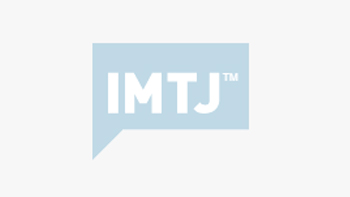The company that solved healthcare’ is the ambitious title of a new book by John Torinus Jr., chairman of Wisconsin-based Serigraph, a 61-year-old plastic printing firm with 450 U.S. employees, but 1,700 worldwide in India, China and Mexico. This does make them very different to most US companies in their healthcare employee needs.
‘The company that solved healthcare’ is the ambitious title of a new book by John Torinus Jr., chairman of Wisconsin-based Serigraph, a 61-year-old plastic printing firm with 450 U.S. employees, but 1,700 worldwide in India, China and Mexico. This does make them very different to most US companies in their healthcare employee needs.
The book claims to be a blueprint for solving the biggest problem in health care: runaway costs. Torinus describes how the company engaged its employees in managing their health and health costs and how innovations at other companies were sought out and put to work. Serigraph has had only three small premium increases in the last seven years and has held in increases to less than 3% annually.
Changes emphasized consumer responsibility, centres of excellence, and a prime role for primary care. Previous efforts (wellness programs, some rationing, participating in a buying group, and cost-shifting to employees) had accomplished little. The firm is now self-insured, with costs now split 80/20 with its employees.
Included in the health plan, but in a tangential rather than central capacity, is a medical tourism programme both domestically in the USA and using places including India and Costa Rica, that offers companion travel. Serigraph employees now shop for care to reduce their co-pays and share of overall costs. Torinus feels that there is no relationship between health care costs and quality, however measured, and that the key to controlling costs is attention to detail and total employee involvement. BridgeHealth Medical arranges the medical tourism.
Torinus comments, “ When Serigraph employees found out that they will see no premium increases for health care in 2011, they were elated. They know that it was their efforts, person by person, that made the difference. Health cannot be improved and health costs cannot be lowered without the full engagement of the participants in the plan. Each employee at the company received a copy of the book, as their stories of battling the hyperinflation in health care are included in the book. With inflation running at about 7% this year, we will have to work even harder as intelligent consumers if we are to avoid a premium increases again in 2012. But we know it can be done, because we’ve managed that feat five times in eight years.”
America’s health care problems are so extensive that they are incapable of being solved by any one company or any one approach. But the book is worth reading for anyone interested in the US market and Torinus is amazed that hospitals make it so difficult to compare what are often huge price differences between almost identical hospitals in different US towns and cities. House Republicans hope to make good on a campaign promise to undo the healthcare reform law by scheduling an early vote to repeal it. Such a repeal vote would be largely symbolic, as the prospects of a repeal bill making it through the Senate, where Democrats cling to a narrow majority, is much less likely. Democrats are preparing for a fight to defend the reform, noting that consumers already are benefiting from changes made under reform. They argue that undoing the law would increase the number of uninsured; put insurers back in control of health insurance, allowing them to increase premiums at will; and lead the federal budget deficit to grow quicker. Torinus comments, “The Senate won’t agree to repeal, and, even if it did, the president would veto. Nor will they replace key provisions for the same reasons. However, good principles that were overlooked in the passage of the law could be injected into it. Transparent prices could be ordered. Consumer driven principles could be included as an option in all health plans.“
Part of the new healthcare legislation has come into effect from 2011. For rate increases of ten percent or more in the individual and small group markets filed in a state on or after July 1, 2011, or effective on or after July 1, 2011, insurers will be required to publicly disclose and justify the proposed increases and the increases would not be presumed unreasonable. For rate increases filed in a state for 2012 and thereafter, a state-specific threshold will be set for disclosure of rate increases. The threshold would be determined using state-specific cost data and trends. Torinus comments,” It is an admission that costs/prices are still soaring out of control — 10% or more in many cases. The answer is an army of consumers equipped with good information on health care value — quality metrics, transparent all-in prices and service. Why would anyone pay $50,000 for a hip replacement when a good one can be bought for $20,000 in the same regional market? They do, because there is no transparency on all-in prices.”








 ©2024 All rights reserved LaingBuisson
©2024 All rights reserved LaingBuisson 


